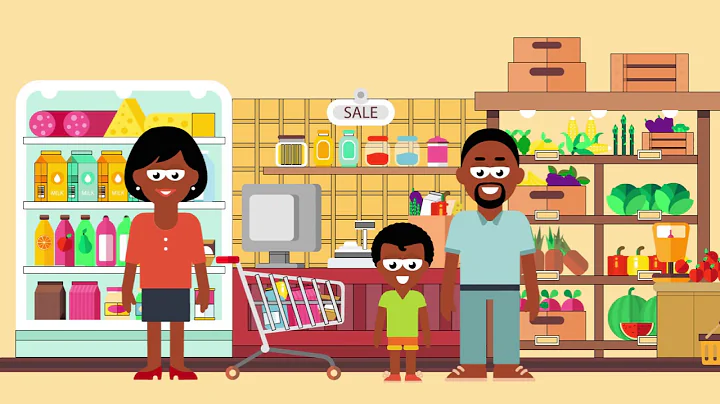Qiuqiu is 11 years old and a boy in fifth grade. Qiuqiu eats a lot but does very little exercise. Seeing Qiuqiu's weight increasing day by day and his athletic ability getting worse and worse, Qiuqiu's mother was deeply worried about this and took Qiuqiu to the hospital for treatment.
After completing the medical history inquiry and related examinations, the doctor determined that Qiuqiu was obese and had acanthosis nigricans. After ruling out pathological factors, he diagnosed Qiuqiu as simple obesity. During further examination, the doctor found that Qiu Qiu's blood pressure was significantly higher than the normal level for his age, and he also had symptoms of hyperlipidemia, fatty liver disease, and insulin resistance. He was in urgent need of medical intervention.
The doctor recommended dietary adjustment and exercise intervention for Qiuqiu, and formulated a personalized meal plan and exercise prescription for Qiuqiu. At the same time, he reminded parents not to restrict Qiuqiu's diet excessively, so as not to affect his normal growth and development. Not only that, the doctor also told parents to pay attention to home-school communication, pay attention to Qiuqiu's mental state, and constantly encouraged Qiuqiu to actively control his weight.
With the joint efforts of doctors, parents, schools and Qiuqiu, Qiuqiu's weight has finally been effectively controlled, his exercise level has also been greatly improved, and his blood pressure, blood lipids and insulin have all returned to normal levels.

Obesity refers to a nutritional disorder caused by energy intake exceeding consumption caused by a variety of factors, leading to excessive fat accumulation in the body and body weight exceeding the reference range. According to the classification of disease causes, obesity can be divided into simple obesity and pathological obesity. This article describes the former. This type of obesity is closely related to lifestyle.
What are the symptoms of obesity?
Children with simple obesity are generally taller in early childhood, have hyperappetite and eat a lot. As obesity gradually increases, children will become less active and become breathless when doing even the slightest exercise. In severely obese children, purple streaks may appear on the skin on the abdomen, outside of the buttocks and thighs, and the skin on the head and neck, armpits, groin, etc. may become black and thick, and cannot be scrubbed clean with soap, also known as acanthus nigricans.
The occurrence of acanthosis nigricans is related to abnormal endocrine function of adipose tissue. In obesity, pro-inflammatory adipokines increase and anti-inflammatory adipokines decrease. Abnormal adipokines can lead to insulin resistance, hyperinsulinemia and thus cause acanthosis nigricans in the skin. In addition, , Adipokine can also activate adipokine receptors, thereby directly stimulating skin keratinocyte proliferation.
What are the dangers of obesity?
Obesity is a systemic disease that can have adverse effects on the endocrine system, cardiovascular system, digestive system, psychological behavior, etc. It can cause diabetes and pre-diabetes, dyslipidemia , hyperlipidemia Various complications including blood pressure , non-alcoholic fatty liver disease, polycystic ovary syndrome , and obstructive sleep apnea, etc., can lead to mental health problems such as reduced self-esteem, depression, and anxiety in children.
How to determine whether children are obese
Body mass index (BMI) is the preferred indicator recommended by the international community to evaluate overweight and obesity in children (≥2 years old). BMI=weight (kg)/height 2 (m2). The BMI cutoff values for overweight and obesity screening for children and adolescents aged 2 to 18 years old in my country are as follows:

Which methods can effectively prevent and control childhood obesity
The principle of obesity treatment is to reduce energy intake and increase energy consumption to reduce body fat and bring it close to normal. At the same time, it does not affect children's health and growth and development. For children with pathological obesity or obesity complications that have a clear cause, treatment needs to be targeted at the cause or corresponding complications. Children are in a critical period of growth and development, and dietary adjustments and increased exercise are the main ways to control children's weight.
Diet adjustment
Traffic light dietary intervention model Foods are classified according to energy density: low-calorie foods are labeled with green labels, indicating that they can be taken freely; medium-calorie foods are labeled with yellow labels, indicating that they need to be taken with caution; high-calorie foods are labeled with yellow labels, indicating that they need to be taken with caution; Calorie foods are labeled in red, indicating that they should be eaten as little as possible.
Macronutrient distribution method Limiting energy intake can be achieved by changing the energy distribution ratio of macronutrients (protein, fat, carbohydrates ) or improving the quality of carbohydrates. For example, increasing protein intake will have a significant effect on children and adolescents losing weight if the energy supply is equal.
Increase exercise
html Healthy children aged 6 to 17 should engage in at least 60 minutes of moderate to high-intensity physical activity every day, mainly aerobic exercise, and at least 3 times of high-intensity physical activity and 3 times of resistance exercise (such as lying on their backs) per week Sit-ups, pull-ups, , etc.).Children should choose more sports with low intensity and the duration should not be too long, such as jogging, ball games, swimming, cycling, walking and running, etc. They should avoid long-distance swimming, weight-bearing, Long-distance running and other forms to avoid sports injuries to children's bodies. Not only that, the selection of sports events should also follow the laws of children's psychology . While ensuring safety and effectiveness, it should also take into account fun to meet children's psychological needs.
When children carry out daily physical activities, they should try to diversify the intensity and form, pay attention to the correctness of exercise postures, and the transition between activities of different intensities. Preparations should be made before exercise, and exercise should be avoided on an empty stomach and within 1 hour after meals. Pay attention to replenishing water during and after exercise. Parents should choose physical activities suitable for their children based on their children's preferences and physical conditions, and should not pursue excessive exercise intensity and time to avoid sports injuries.
Author: Department of Child Health, Shanghai Children’s Hospital
Source: Healthy China





















